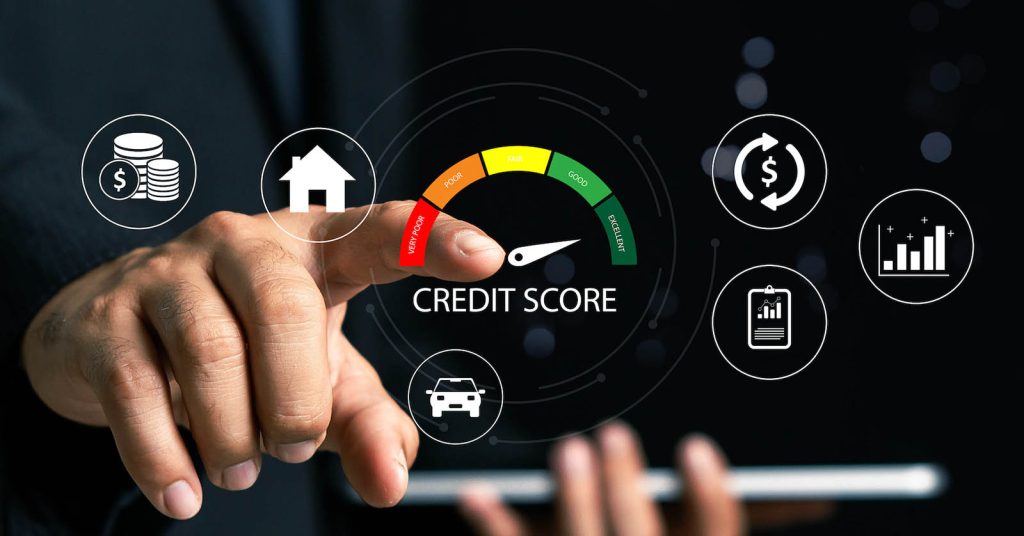Free weekly credit reports are now a permanent feature in the U.S., and using them well is the easiest, zero-cost way to protect your credit. The three nationwide bureaus — Equifax, Experian, and TransUnion — supply your reports through the official portal, AnnualCreditReport.com, so you can review everything lenders see and spot errors or identity-theft red flags early. Your report is different from a score: it’s the raw data (accounts, balances, payment history, and inquiries) that scoring models use to calculate numbers like FICO® and VantageScore®. In this guide, you’ll learn how to get your reports safely, what to look for, how often to check, and how to set smart alerts. You’ll also see when to add fraud alerts or a security freeze, and how to dispute mistakes with a clear paper trail. Where rules or timelines matter, we cite the FTC and CFPB, plus the bureaus’ own pages, so you can verify details and click through to the exact forms you’ll need. With a simple monthly or weekly rhythm, monitoring takes minutes and can save you hours of cleanup later. Most importantly, reading the report yourself makes every other credit task — improving a score, shopping a loan, or disputing a collector — faster and clearer. If you’ve never pulled one, start today, save clean PDFs, and build a recurring habit you’ll keep for years. The whole process is free when you use the official channel, and you can repeat it as often as once a week from each bureau.
Key Takeaways
- Use the official portal: Get free weekly reports from Equifax, Experian, and TransUnion at AnnualCreditReport.com.
- Reports ≠ scores: Your free credit report may not include a score; many banks/apps show scores separately.
- Disputes have clocks: Bureaus generally must investigate most disputes within 30 days (45 in some cases).
- Add protection when needed: Fraud alerts and security freezes are free and don’t hurt your score.
- Don’t forget specialty reports: You can also request free reports from ChexSystems, Innovis, and LexisNexis.
Where to Get Free Reports (and Why “Official Site Only” Matters)
Start at the one site Congress authorized: AnnualCreditReport.com. It’s jointly sponsored by Equifax, Experian, and TransUnion and remains the central, no-cost portal for your reports; anything else with a similar name is a look-alike or a paid upsell. Since 2023, the FTC has confirmed that free weekly access is permanent, so you can check as often as you like without paying. That cadence is powerful: a weekly or monthly glance is often enough to catch errors before they cascade into denials, higher rates, or fraud headaches. The portal lets you request one bureau at a time or all three at once, and if online verification fails, you can use the site’s mail or phone options and still pay nothing. After download, save each report as a PDF with a clear date stamp — for example, “TransUnion_2025-10-09.pdf” — so you can compare changes and annotate what you disputed and when. For first-timers, it’s normal that your report doesn’t include a score; think of the report as the data feed and scores as calculations on top. If you want a free score for context, many banks and card issuers provide one inside their apps, and the bureaus also offer score products — but you don’t need a score to monitor your report for errors. Above all, never enter payment info to get a legally free report; if a page asks for a card, back out and confirm the URL.
How to Request (Online, Phone, or Mail) and Set a Monitoring Rhythm
The simplest path is online at the official portal, where you’ll answer identity questions based on past addresses, loans, or payment amounts. If you can’t authenticate online, use the mail or phone instructions linked on the same site; the free entitlement is the same. Once you have access, pick a rhythm that you’ll actually keep. Some people pull all three bureaus on the same day once a month to compare them side-by-side, which is helpful for big projects like a mortgage application. Others stagger pulls — e.g., Equifax this week, Experian next, TransUnion the week after — to keep a near-continuous watch with minimal effort. Either way, set a repeating calendar reminder and store the PDFs in a single folder so you can track changes over time. If you use a monitoring app, remember that those alerts are supplements, not substitutes, for the raw report; apps can lag or omit fields that matter when you file a dispute. As you review, focus on five anchors: personal info (names, SSN variants, addresses), accounts (status, limits, balances), payment grids (late codes), collections/public records (e.g., bankruptcies), and inquiries (soft vs. hard). If a late payment or limit looks wrong, add it to a dispute list with the exact line and date — precision speeds corrections. When you’re done, jot a one-line summary (“Balances down 5%, one unknown hard pull, Experian address typo”) so next month’s check is faster. Over time, you’ll spot patterns that explain score moves even when the score itself isn’t on the free report.
What Changed Recently (Weekly Access and Medical-Debt Context)
Two changes shaped the modern monitoring routine. First, the bureaus made free weekly reports permanent, removing the old constraint of “one per year,” which means you no longer have to pace pulls to preserve access. Second, medical-debt reporting evolved: in 2023 the three bureaus removed paid medical collections and those under $500, and they now delay reporting of new medical collections for one year. In early 2025 the CFPB finalized a rule to remove all medical bills from lender-used reports, but later litigation affected its implementation; the safest practical advice is to check your reports and dispute any medical entry that doesn’t comply with current industry policy or that’s inaccurate on its face. For most households, the immediate takeaway is that many small medical collections should already be gone, and weekly access lets you confirm quickly. Regardless of policy debates, disputing an error follows the same pathways and timelines (see below), and monitoring weekly means you won’t learn about a surprise collection only after a lender pulls your file.
Dispute Errors the Right Way
If you find something wrong — a late payment you made on time, a duplicate tradeline after a sale to collections, an address you never used — dispute it with the bureau that’s reporting it and, when possible, with the furnisher (the lender or collector) that supplied it. The CFPB’s step-by-step guidance includes sample letters and emphasizes including copies of evidence (statements, payoff letters, or an identity-theft report) and keeping a dated paper trail. Under federal law, the bureau generally has 30 days to investigate most disputes (up to 45 days in some cases) and must forward your information to the furnisher; after the investigation, it has five business days to notify you of the results. If something is corrected, related negative data should be updated; if the bureau can’t verify the entry, it must delete it. If you disagree with the outcome, you can add a short statement of dispute to your file and escalate to the CFPB’s complaint portal with your documentation. For medical collections, cite the bureaus’ 2023 policy changes if the entry should have been removed (e.g., under $500 or paid). Keep your saved PDFs and dispute letters together so you can show a lender what changed if you’re under a deadline.
Protective Tools: Fraud Alerts and Security Freezes
Monitoring is proactive, but if you spot suspicious activity (unknown hard inquiry, account you didn’t open), add a fraud alert or a security freeze. A fraud alert tells lenders to take extra steps to verify your identity before opening new credit and is easy to place; an initial alert lasts one year, and extended alerts last longer if you have an FTC identity-theft report. A security freeze is stronger — it blocks most new credit checks until you lift it — and it’s free to place, lift, or remove at each bureau. Freezes don’t affect your score and don’t block normal use of existing accounts; you just thaw temporarily when you want to apply. The FTC has plain-English pages that explain both tools and link to each bureau’s freeze flows; the bureaus themselves provide online management portals (e.g., myEquifax) so you can lock/unlock quickly. Many consumers leave a freeze on permanently and thaw for a day when shopping a loan, which pairs nicely with weekly monitoring because you’ll see any changes at a glance. If you suspect identity theft, build a plan at IdentityTheft.gov and use the report in your disputes.
Beyond the “Big Three”: Specialty Reports Worth Checking Annually
Your credit health isn’t only the big three bureaus. Banks often screen new checking accounts through ChexSystems (account history), and some creditors and insurers consult Innovis or data brokers like LexisNexis Risk Solutions. You can request these reports for free about once every 12 months and dispute errors just as you would with the main bureaus. ChexSystems provides free consumer disclosures and supports freezes; this is valuable if you’ve ever been denied an account for “banking history.” Innovis offers a free credit report, disputes, alerts, and freezes through its portal. LexisNexis provides a “FACT Act Disclosure Report,” which can include public records, addresses, and other identity data lenders may reference; you can also place a security freeze there. Checking these once a year closes blind spots that basic “credit monitoring” apps don’t cover. Add a note in your calendar to pull ChexSystems, Innovis, and LexisNexis the same month you do a deep dive on the big three so you clean your entire footprint at once.
Build a Simple Monitoring Routine
Keep it light and repeatable. First, set a monthly reminder labeled “Credit check — pull & file,” and choose whether you’ll stagger reports weekly or download all three together. Second, use the same five-point scan every time: personal info, accounts, payment grids, collections/public records, inquiries. Third, add alerts in your bank/credit-card apps for large transactions and new-account notifications so you get pinged between check-ins. Fourth, save each PDF to a single folder with date-stamped names and a one-line summary so next month’s comparison is effortless. Fifth, if you’re preparing for a major loan, check all three bureaus two–three months before you apply; file any disputes immediately so corrections can post before underwriting. Sixth, consider a standing freeze so nothing new opens without your say-so; it takes minutes to thaw when you need to. Seventh, revisit specialty reports (ChexSystems/Innovis/LexisNexis) annually so banking history and identity data don’t surprise you. Eighth, if you find a medical collection that should have been removed under the 2023 policy, dispute it with a copy of the bureau’s announcement page in your file. Ninth, after a dispute, look for the bureau’s result letter and confirm your updated report reflects the change; TransUnion, for instance, explains how to read dispute results and where updates appear. Tenth, remember that steady monitoring beats perfection — a quick monthly pass and a tidy folder will keep you safer than sporadic deep dives you never finish.
Frequently Asked Questions (FAQs)
Is AnnualCreditReport.com really free?
Yes. It’s the official portal jointly run for Equifax, Experian, and TransUnion, and you can get free reports as often as weekly. Avoid look-alikes that ask for payment.
Why doesn’t my free report show a score?
Reports are the underlying data; scores are separate calculations. Many banks and apps show a score for free, and bureaus sell score products, but you don’t need a score to monitor or dispute report data.
How long does a dispute take?
Most investigations must be completed within about 30 days (45 in some cases). You’ll get results and, if appropriate, corrected reports.
Will a freeze hurt my score or block existing cards?
No. Freezes don’t affect your score and don’t stop normal use of current accounts; they mainly block most new credit checks until you lift them.
Do I need to check ChexSystems or Innovis?
It’s smart to do so yearly. Banks may use ChexSystems when you open accounts, and some creditors consult Innovis. Both provide a free report and support freezes.
Sources
- FTC — Free Credit Reports (weekly access & official portal)
- AnnualCreditReport.com — Official site
- CFPB — How to dispute an error (timelines & letters)
- CFPB — Dispute handout (30/45-day rules)
- FTC — Credit Freezes and Fraud Alerts (overview)
- TransUnion — How to read your credit report (sections & notes)
- CFPB — Removal of <$500 medical collections (industry policy)
- CFPB — Final rule on medical bills (2025 context)
- Equifax — Security freeze portal
- ChexSystems — Consumer Disclosure (free report)
- CFPB — ChexSystems listing (free report & freeze)
- Innovis — Request your credit report
- LexisNexis — FACT Act Consumer Disclosure









